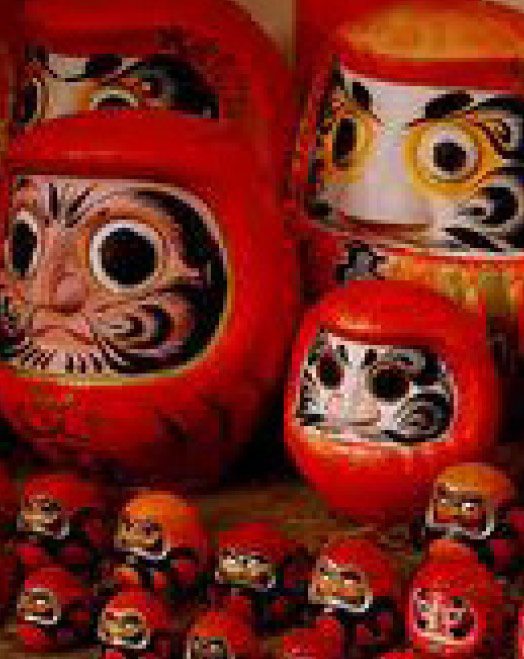2 Religions In Japan
Since then the two religions have been co-existing relatively harmoniously and have even complemented each other to a. Responsible for carrying out rituals to promote national welfare the six Nara sects which dominated Buddhism at this time.

Projected Changes In The Populations Of Adherents Of Other Religions Pew Research Center
Leave a comment if you ACTUALLY got the correct answer before reading the answer.

2 religions in japan. After 1662 entries the Everything Japanese Encyclopedia became too big to fit in a single volumeAfter much deliberation it was decided that the EJE would be broken up into separate tomes. In the Global Index of Religiosity and Atheism with the year 2012 Japan ranks second among the least religious countries. Shinto 神道 Shintō also kami-no-michi is the indigenous religion of Japan and of most of the people of Japan.
One of the most striking features of Japans new religions is the high number of women acting as founders and current leaders. The New Religious Sects of Japan. Freedom of religion shinkyō no jiyū is guaranteed to all.
Shinto and Buddhism are Japans two major religions. This is one of those. And please dont forget to share this awesome questionanswer post with your family and friends on social media to see if they can answer it.
The secular nature of Japanese society can be seen in. In a country where the number of people reporting affiliation with a particular religion equals two times the actual populationand up to half of those also report being non-religiousit would seem that there is a conundrum on our hands. Introduction to the question What are the two dominant religions practiced in JapanShinto has been around in Japan since the beginning but Buddhism came over from China and Korea during the sixth century CE.
R eligion in Shogunate Japan Shinto and Buddhism are Japans two major religions. This not only because these women held important roles in Japans modern religious history but also. It is inevitably necessary for understanding Japanese culture to have a sufficient understanding of Japanese religions especially Shinto and Buddhism.
Step 1. This portion of the EJE is devoted to the various religions that are and have been practiced in Japan. Though many Japanese people dont have daily religious practices many celebrations and ceremonies have origins in Buddhist and Shinto.
In modern medical terms the Buddha presented his path according to the four medical principles. However the coexistence of Buddhism and Shinto continued. The correct answer to the question What are the two dominant religions practiced in Japan.
This is somewhat similar to the case of Western culture which can be understood well only with a good understanding of Hellenism and Judeo-Christian tradition. What was the most popular religion in feudal Japan. Italics mine2 Given such sentiments it is.
Christianity has been only a minor movement in Japan. Nakayama Miki 15 Deguchi Nao 16 and Kitamura Sayo 17 are occasionally referred to as the trinity of foundresses by students of the new religions. Religion once featured heavily in Japans public sphere with both Shintō and Buddhism each being the state religion at different points in Japanese history.
Nevertheless Japans official statistics in 2019 recorded 879 million followers of the indigenous natural religion of Shintoism and 846 million Buddhists - out of a total population of 126 million. 2 Japanese Religions 37 1 2 the symptoms of suff ering 2 reveals the causes for suff ering 3 states that there is a way to heal the disease and fi nally 4 prescribes a therapy. Masatoshi Doi Yasuo Mizoguchi and Sakae Kobayashi Nihon ni okeru Kirisuto-kyō to Nihon no Sho-shūkyō to no Sesshoku no Mondai.
Thus in a nation like prewar Japan where the emperor system was the source of all values any true religion inevitably came in conflict with the emperor system. Shinto is as old as the Japanese culture while Buddhism was imported from the mainland in the 6th century. However secularism has been a prominent aspect of Japanese society since the introduction of the Constitution of Japan 1947.
No religious organization shall receive any privileges from the state nor exercise any political authority. And this article posted at Gaijin Pot discusses the paradox of Japans religiosity and atheism. The two main religions of Japan are Shintoism followed by Buddhism.
The Japanese religious tradition is made up of several major components including Shinto Japans earliest religion Buddhism and Confucianism. The Emperor Shomu 701756 adopted Buddhism as the official state religion and built the temple Todaiji at Nara and its huge statue of the Buddha. Everything Japanese EncyclopediaReligion in Japan.
Takagi Hiroo The Newly Established Religions in Japan. The State and its organs shall refrain from religious education or. No person shall be compelled to take part in any religious act celebration rite or practice.
As is well known all religions quest for the Absolute.

Religion Japanese Culture Inside Japan Tours

Top Religion Population In Japan 1900 2100 Religion Population Growth Youtube

Indonesia Religions Britannica

Top Religion Population In Japan 1900 2100 Religion Population Growth Youtube

The Changing Global Religious Landscape Pew Research Center

Shinto All About Japan S Oldest Religion Bokksu

Top Religion Population In Japan 1900 2100 Religion Population Growth Youtube

Ever Growing Muslim Community In The World And Japan Waseda University

Top Religion Population In Japan 1900 2100 Religion Population Growth Youtube





Posting Komentar untuk "2 Religions In Japan"